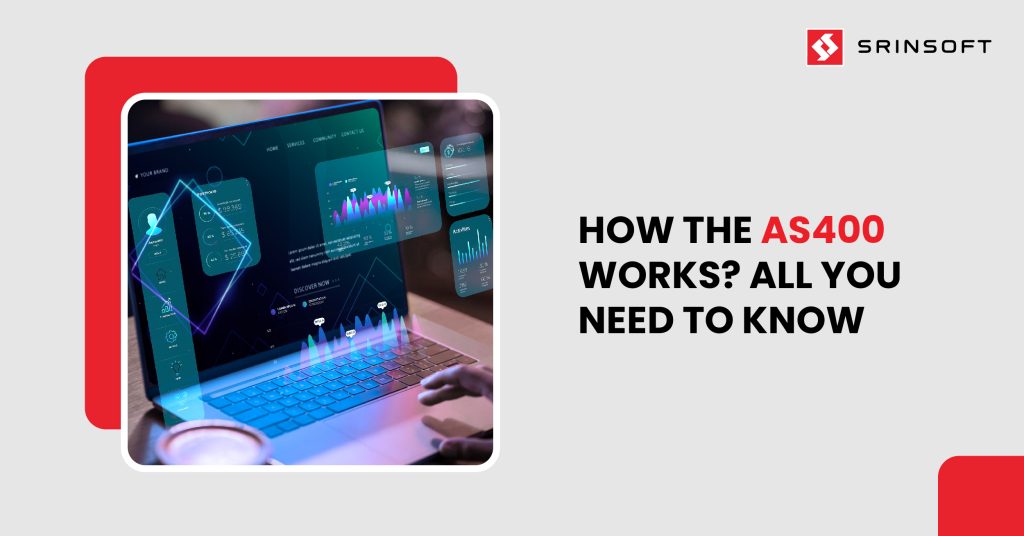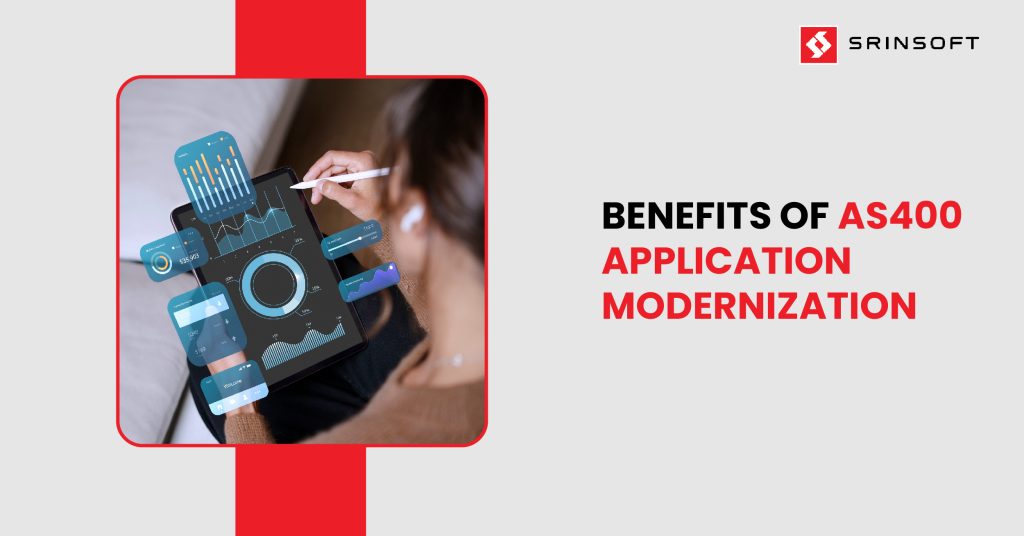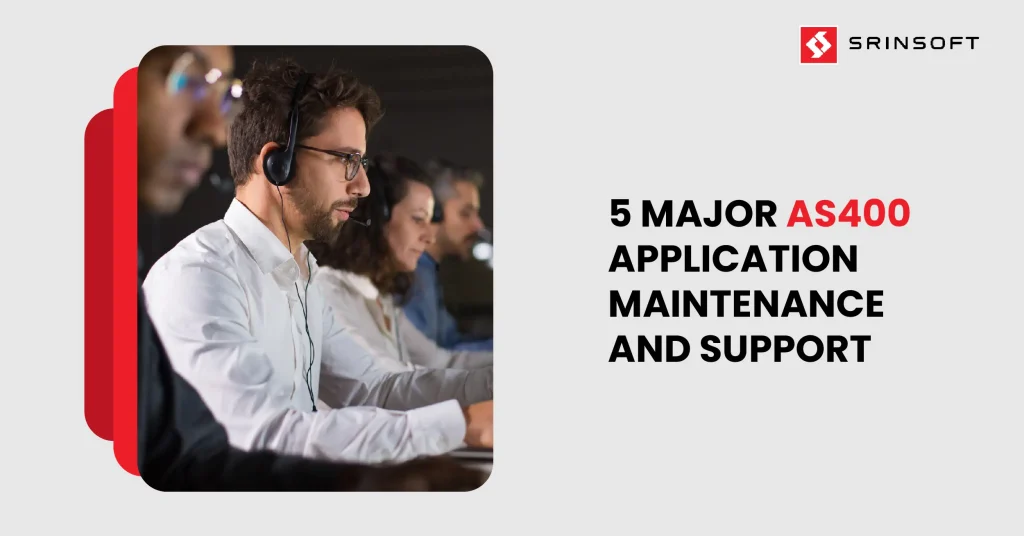
Introduction
Computing capabilities have advanced by leaps and bounds, yet the AS400 continues to be indispensable among businesses despite being introduced over three decades ago. This longevity is attributed to the robust engineering behind the system which has ensured undiminished security, reliability and a deep integration with businesses which even many modern platforms struggle to match.
For businesses that are looking to adopt AS400 or for those who are working with it and are doubting its obsolescence, it is important to understand how it works and why it continues to be relevant.
Rest assured, AS400 will continue to be a main stay among industries like finance, manufacturing and logistics, as it has always delivered on its promise of running strong with barely any unplanned downtime for decades.
In this blog we elaborate on the nitty gritty of the AS400 system that makes it a relevant technology to this very day and why it is so deeply woven into business functions.
If you’re exploring next steps, our IBM i services can help you accelerate outcomes without disrupting current operations
Importance and Relevance of AS400 in Modern Computing
Behind the reputation of AS400, is its integrated architecture in which every part of the system (hardware, operating system, database, and even programming environment) was designed by IBM to specifically work optimally with each other. This cohesiveness results in a highly stable environment with fewer bugs, crashes, and performance bottlenecks.
Thanks to this design, many companies have run AS400 for years, sometimes even decades, with minimal downtime, making them the backbone of operations where failure simply isn’t an option.
Another important reason why AS400 is such an integral part of operations is the custom business applications built specifically for the AS400.
Replacing or migrating these legacy systems is often expensive and an extremely cumbersome process, even though we have sophisticated cloud computing capabilities these days.
Not to mention the low cost of ownership of AS400 which makes it a preferred option in the long run. AS400 doesn’t require a constant need for patches and updates and has lower licensing and subscription costs compared to modern cloud-based enterprise software stacks.
Finally, its object-based security model gives fine-grained access control that enhances system security and makes breaches significantly harder, making the system to be seemingly impregnable.
How AS400 Works?
The AS400 has truly been the epitome of future-proofing, whose architecture has been consistent across time. Let us put AS400 under a lens and see what makes it tick and the things that give the system such computing prowess.
Everything You Need To Know About AS/400 iSeries (IBMi)
System Architecture
AS400’s system architecture was entirely built by IBM with a deep synergy between its hardware and software, unlike many modern systems which have hardware and software from different vendors.
At the core of AS400’s computing power is the Central Electronics Complex (CEC) which houses the processors and memory systems. To handle communication with peripheral devices, like printers and disk drives, the CEC also has multiple I/O processors so that the main computing resources aren’t drained.
On the hardware side, the AS400 uses PowerPC-based processors. These are powerful chips known for their efficiency and processing speed. AS400’s ability to process high volumes of data comes from its memory units and storage devices specifically optimized for high reliability and fast data throughput.
The stand-out feature in AS400’s architecture is the Technology Independent Machine Interface (TIMI), which is basically a smart translator between software and hardware that allows applications to run without any changes even if the underlying hardware changes over time.
Another innovation baked right into the AS400 is its database technology, called DB2 for i. Unlike modern computers where the database is a separate application that needs to be installed, DB2 for i is part of the operating system itself.
This feature has proved to be very useful because it makes it easier for businesses to manage data securely and efficiently without the complexity of having to rely on third party providers.
Operating System
The AS400 runs on IBMi operating system, which was formerly called OS/40. IBMi is tightly integrated with the hardware, in that the OS knows exactly how the hardware behaves and was specifically designed to work with AS400 hardware, and vice versa.
Following are some of the key features of IBMi
- Single Level Storage Architecture – Single-Level Storage (SLS) is a unique feature of IBM i that combines memory (RAM) and disk storage into a single, unified address space. It doesn’t matter if data is physically on RAM or on disk, the OS automatically handles moving data back and forth between memory and storage, without the program having to worry about it.
- Object-Based Architecture – In IBM i (AS400), everything inside the system is treated as an “object.” An object is a self-contained unit with a type (like program object, file object, user profile object etc.) and a set of rules about how it can be accessed or modified. Because each object has a strict type and access control, a user or a program cannot accidentally or maliciously overwrite system components nor can the user automatically access all objects. This greatly improves system integrity and security.
- Integrated Middleware: Middleware refers to the “in-between” software that connects applications, users, and databases. The integrated middleware in IBM doesn’t require users to install and manage separate middleware (like web servers, database servers, or app servers) as they’re already part of the platform, optimized and ready.
Programming Languages
AS400 supports a wide variety of programming languages which is particularly useful when it comes to developing applications. This is because AS400 developers aren’t locked into one language as they can pick the best suited language for a specific application. For example, CL (Control Language) is best suited for system-level automation while RPG and COBOL are for transaction-heavy business logic.
Some of the programming languages supported by AS400 include RPG, COBOL, Java, Node.js, SQL CL and more recently even Python. One of the advantages of AS400 is that all the languages interact equally well with the same object-based architecture, DB2 database, and single-level storage and are deeply optimized for AS400’s hardware and OS.
Database Management
DB2 for i is the integrated database management system within IBM i, which means it is not just installed on IBM i, it’s part of the operating system itself. One of the significant advantages this practically offers is that security, user roles, object permissions, and job scheduling are all shared between the OS and the database.
DB2 for i uses the same object-based architecture, meaning it follows the same rules for access control, integrity, and resource allocation as every other part of the system. Also, IBM has tailored DB2 for i to take advantage of PowerPC architecture, which includes features like high-speed data access, parallel processing, and workload balancing.
Another advantage of DB2 being a native component of IBM i is that it eliminates many of the tedious, error-prone setup and maintenance steps needed in traditional database environments. This boosts uptime and frees up IT teams to do more valuable work.
Security Features
The most notable security feature in AS400, that makes it so impenetrable, is the object-based security model in which each object (whether a file, program, or user profile) has its own security attributes, and access is controlled at the object level. On IBM i, every object has built-in metadata that gives granular access controls with which one can
- Control who owns the object and has default rights.
- Authorize a list of users or groups and what they’re allowed to do
- Restrict access is given to users who aren’t explicitly listed
These attributes are enforced by the OS itself, not left up to the application.
IBMi also offers several other security mechanisms. Some of these are
- Network security protocols which ensure that data transmitted over networks is encrypted, preventing eavesdropping or tampering
- Auditing and compliance tools that are built into the OS can log system access attempts, track changes to sensitive objects and even monitor user actions
- Encryption services that offer field level encryption which can encrypt specific pieces of data, disk level encryption which can encrypt everything stored on a disk volume and also offer encrypted backups.
Conclusion
The AS400 has stood the test of time thanks to its robust architecture that has rendered the system stable and reliable. Despite its legacy nature, the platform has many modernization pathways for companies so that they can adapt to the changing technological landscape while capitalizing on its robustness.
For those who look to completely move from AS400 to modern cloud platforms, AS400 also has migration pathways. AS400 has powered critical operations for decades and is expected to do in for the years to come.



